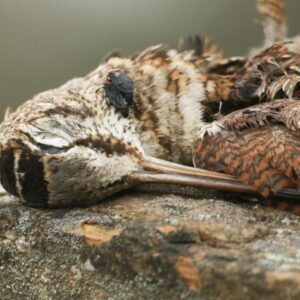Tofino Wah-nah-jus Hilth-hoo-is Mudflats – Celebrating a Vital Link in a Chain of Sites for Migratory Birds
.jpg) Each year, Vancouver Island’s small coastal community of Tofino attracts thousands of tourists from around the world who seek out its idyllic beaches and wilderness experiences. It is also a critical stop-over site for tens of thousands of shorebirds working their way up the west coast to their breeding grounds in the Yukon, Alaska and parts of eastern Russia. Each year, the townspeople of Tofino celebrate the arrival of these shorebirds and organize events to raise awareness of the site’s importance to people – residents and visitors alike.
Each year, Vancouver Island’s small coastal community of Tofino attracts thousands of tourists from around the world who seek out its idyllic beaches and wilderness experiences. It is also a critical stop-over site for tens of thousands of shorebirds working their way up the west coast to their breeding grounds in the Yukon, Alaska and parts of eastern Russia. Each year, the townspeople of Tofino celebrate the arrival of these shorebirds and organize events to raise awareness of the site’s importance to people – residents and visitors alike.
For the past two years, biologists at the Canadian Wildlife Service have been working with the Mayor of Tofino, Parks Canada and First Nations representatives to designate Tofino (Wah-nah-jus Hilth-hoo-is) as a Western Hemisphere Shorebird Reserve Network – these are globally important bird areas that protect migratory shorebirds as they hopscotch their way up and down the coast on migration. WHRSN (pronounced “wizern”) recognizes that shorebird reliance on productive stop-over sites like Tofino make them vulnerable to environmental change. Removing one link in a chain of sites could have dire consequences for shorebirds species that depend on an intact and functioning chain of sites along an entire flyway.
The key to the success of WHSRN to date has been its insistence on securing agreements of all landowners or managers of a site – and for Tofino, this meant securing First Nation, federal government and municipality input. On May 3rd, representatives from all three parties met on the mudflats of Tofino and agreed to the designation of Tofino Mudflats as the 89th WHSRN site (and only the second one in British Columbia).



